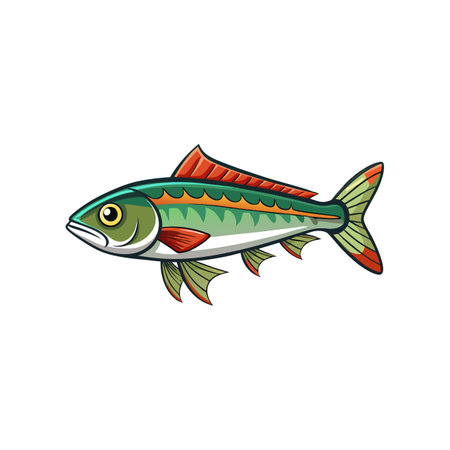Understanding Nymphing: The Basics of Subsurface Fly Fishing
Nymphing is one of the most effective and widely used fly fishing techniques for targeting trout in rivers and streams across the United States. Unlike dry fly fishing, where anglers cast floating flies to mimic insects on the waters surface, nymphing focuses on imitating aquatic insects beneath the surface — where trout spend most of their time feeding.
What Is Nymphing?
Nymphing involves using weighted flies, or adding weight to your line, to drift imitations of insect larvae (called nymphs) below the surface. These subsurface bugs include mayfly nymphs, stonefly nymphs, caddis pupae, and midges — all of which are staple food sources for trout year-round.
How Nymphing Differs from Dry Fly Fishing
While both dry fly fishing and nymphing aim to imitate natural insect behavior, they differ significantly in technique and purpose. Heres a quick comparison:
| Aspect | Nymphing | Dry Fly Fishing |
|---|---|---|
| Presentation | Below water surface | On top of water surface |
| Main Target Stage | Nymph/larval stage of insects | Adult flying insects |
| Strike Detection | Use indicators or watch leader movement | Visual takes on the surface |
| Conditions Best Used | Year-round; especially when no surface activity | When trout are rising or during hatches |
| Effectiveness | High; trout feed mostly subsurface | Situational; depends on hatch activity |
Why Anglers Love Nymphing Across America’s Trout Waters
Nymphing is popular among American fly anglers because it works — plain and simple. Whether youre fishing a freestone stream in Colorado, a spring creek in Pennsylvania, or a tailwater in Montana, trout are almost always feeding below the surface. That means nymphing gives you a higher chance at consistent success throughout the day and across seasons.
A Few Key Benefits of Nymphing:
- Versatility: Works in nearly all water types and conditions.
- Productivity: Targets where fish feed most — below the surface.
- Learning Curve: Easier to learn than perfect dry fly presentations.
- Tactical Depth Control: You can adjust weights or use different rigs to reach specific depths.
A Glimpse Into What’s Ahead
This is just the beginning. In upcoming sections of “Nymphing 101: An In-Depth Look at Subsurface Fly Fishing Techniques,” we’ll explore gear choices, rigging methods, reading water for ideal nymph runs, strike detection strategies, and more practical tips to help you master this essential fly fishing skill.
2. Essential Gear for Nymph Fishing
Nymphing is all about precision and sensitivity. To be successful, you’ll need gear thats specifically suited to fishing below the surface. Here’s a breakdown of the essential equipment youll want to have in your kit, along with some tips for dialing in your setup.
Rods
When it comes to nymphing, longer rods are typically better. A 10-foot rod in a 3-5 weight is ideal for most situations. The extra length gives you better line control and helps with reaching across currents while keeping as much line off the water as possible.
Recommended Rod Features:
| Length | Weight | Action |
|---|---|---|
| 10 – 11 | 3wt – 5wt | Medium to Fast |
Reels
Your reel doesn’t need to be fancy for nymphing, but it should have a smooth drag system and balance well with your rod. Since you’re often using lighter tippets, a good drag can help protect them when fighting fish.
Key Considerations:
- Smooth disc drag system
- Lightweight to match longer rods
- Large arbor for quick line retrieval
Fly Lines
Nymph-specific fly lines are designed to help you detect strikes and manage slack more efficiently. Some anglers also opt for Euro-nymphing lines which are ultra-thin and built for tight-line techniques.
Line Types:
| Type | Description |
|---|---|
| Weight Forward (WF) | Good all-around option; easy to cast indicators and weighted flies |
| Nymph-Specific Line | Tapered for better strike detection and control |
| Euro-Nymph Line | Ultra-thin, low-stretch line ideal for tight-line methods |
Leaders & Tippet
Your leader setup can make or break your nymphing game. For indicator setups, use a standard tapered leader around 9 feet long. For Euro-nymphing, use a specialized leader with colored sighter material to help track subtle takes.
Tippet Tips:
- Use fluorocarbon—it sinks faster and is less visible underwater.
- Common sizes: 4X to 6X depending on water clarity and fish size.
- Add split shot or tungsten putty if your flies aren’t getting deep enough.
Indicators, Weights & Other Accessories
If youre not using a tight-line technique, indicators are crucial for detecting strikes. There are several types available—choose one that matches the water conditions and your casting style.
Indicator Types:
| Type | Best Use Case |
|---|---|
| Thingamabobber | Bigger water; highly buoyant and visible |
| Yarn Indicator | Sensitive; great for spooky fish or slow water |
| Aerodynamic Foam | Casts easily; good all-purpose choice |
Other Useful Tools:
- Nippers & forceps for quick tippet changes and hook removal.
- Tippet rings to extend the life of your leaders.
- A net with a rubber bag to safely land fish without harming them.
Nymph Rig Setup Tips
The way you set up your rig can dramatically affect how many fish you hook. Here are some basic guidelines:
- Depth matters: Adjust the distance between your indicator and fly so that your nymphs drift just above the bottom.
- Mend often: Proper mending keeps your drift natural and improves strike detection.
- Tie dropper rigs: Fish two nymphs at once to cover different depths or offer multiple food options.
A solid understanding of gear is the foundation of successful nymph fishing. Once you’ve got your setup dialed in, it’s all about reading the water and presenting those flies naturally beneath the surface.
